Writing for Social Scientists: How to Start and Finish Your Thesis, Book, or Article (Chicago Guides to Writing, Editing, and Publishing)
Howard S. Becker
Social scientists, whether earnest graduate students or tenured faculty members, clearly know the rules that govern good writing. But for some reason they choose to ignore those guidelines and churn out turgid, pompous, and obscure prose. Distinguished sociologist Howard S. Becker, true to his calling, looks for an explanation for this bizarre behavior not in the psyches of his colleagues but in the structure of his profession. In this highly personal and inspirational volume he considers academic writing as a social activity.
Both the means and the reasons for writing a thesis or article or book are socially structured by the organization of graduate study, the requirements for publication, and the conditions for promotion, and the pressures arising from these situations create the writing style so often lampooned and lamented. Drawing on his thirty-five years' experience as a researcher, writer, and teacher, Becker exposes the foibles of the academic profession to the light of sociological analysis and gentle humor. He also offers eminently useful suggestions for ways to make social scientists better and more productive writers. Among the topics discussed are how to overcome the paralyzing fears of chaos and ridicule that lead to writer's block; how to rewrite and revise, again and again; how to adopt a persona compatible with lucid prose; how to deal with that academic bugaboo, "the literature." There is also a chapter by Pamela Richards on the personal and professional risks involved in scholarly writing.
In recounting his own trials and errors Becker offers his readers not a model to be slavishly imitated but an example to inspire. Throughout, his focus is on the elusive work habits that contribute to good writing, not the more easily learned rules of grammar and punctuation. Although his examples are drawn from sociological literature, his conclusions apply to all fields of social science, and indeed to all areas of scholarly endeavor. The message is clear: you don't have to write like a social scientist to be one.
0226041085
Tricks of the Trade: How to Think about Your Research While You're Doing It (Chicago Guides to Writing, Editing, and Publishing)
Howard S. Becker
Drawing on more than four decades of experience as a researcher and teacher, Howard Becker now brings to students and researchers the many valuable techniques he has learned. Tricks of the Tradewill help students learn how to think about research projects. Assisted by Becker's sage advice, students can make better sense of their research and simultaneously generate fresh ideas on where to look next for new data. The tricks cover four broad areas of social science: the creation of the "imagery" to guide research; methods of "sampling" to generate maximum variety in the data; the development of "concepts" to organize findings; and the use of "logical" methods to explore systematically the implications of what is found. Becker's advice ranges from simple tricks such as changing an interview question from "Why?" to "How?" (as a way of getting people to talk without asking for a justification) to more technical tricks such as how to manipulate truth tables.
Becker has extracted these tricks from a variety of fields such as art history, anthropology, sociology, literature, and philosophy; and his dazzling variety of references ranges from James Agee to Ludwig Wittgenstein. Becker finds the common principles that lie behind good social science work, principles that apply to both quantitative and qualitative research. He offers practical advice, ideas students can apply to their data with the confidence that they will return with something they hadn't thought of before.
Like Writing for Social Scientists, Tricks of the Tradewill bring aid and comfort to generations of students. Written in the informal, accessible style for which Becker is known, this book will be an essential resource for students in a wide variety of fields.
"An instant classic. . . . Becker's stories and reflections make a great book, one that will find its way into the hands of a great many social scientists, and as with everything he writes, it is lively and accessible, a joy to read."—Charles Ragin, Northwestern University
0226041247
Telling About Society (Chicago Guides to Writing, Editing, and Publishing)
Howard S. Becker
I Remember, one of French writer Georges Perec’s most famous pieces, consists of 480 numbered paragraphs—each just a few short lines recalling a memory from his childhood. The work has neither a beginning nor an end. Nor does it contain any analysis. But it nonetheless reveals profound truths about French society during the 1940s and 50s.
Taking Perec’s book as its cue, Telling About Societyexplores the unconventional ways we communicate what we know about society to others. The third in distinguished teacher Howard Becker’s best-selling series of writing guides for social scientists, the book explores the many ways knowledge about society can be shared and interpreted through different forms of telling—fiction, films, photographs, maps, even mathematical models—many of which remain outside the boundaries of conventional social science. Eight case studies, including the photographs of Walker Evans, the plays of George Bernard Shaw, the novels of Jane Austen and Italo Calvino, and the sociology of Erving Goffman, provide convincing support for Becker’s argument: that every way of telling about society is perfect—for some purpose. The trick is, as Becker notes, to discover what purpose is served by doing it thisway rather than that.
With Becker’s trademark humor and eminently practical advice, Telling About Societyis an ideal guide for social scientists in all fields, for artists interested in saying something about society, and for anyone interested in communicating knowledge in unconventional ways.
0226041263
Cautionary Tales for Children
Edward Gorey Hilaire Belloc
Known as a central figure in English literature, Hilaire Belloc produced a number of stunning, funny, and clever admonishments for children. The tales in this volume, illustrated by the inimitable Edward Gorey, contain instructive lessons for almost everyone.
For those children prone to wandering off from their caretakers, there is the story of a certain young Jim, "who ran away from his nurse and was eaten by a lion." Those known to stretch the truth will hardly be comforted by the tale of Matilda, "who told lies and was burned to death." And as for those of us—and our children—who tend to the vainglorious, there is the sobering tale of Godolphin Horne, "who was cursed with the sin of pride and became a boot-black."
Witty, brilliant, and strikingly irreverent.
0151007152
Midnight in the Garden of Good and Evil
JOHN BERENDT
Voodoo. Decadent socialites packing Lugars. Cotillions. With towns like Savannah, Georgia, who needs Fellini? Midnight in the Garden of Good and Eviltakes two narrative strands—each worthy of its own book—and weaves them together to make a single fascinating tale. The first is author John Berendt's loving depiction of the characters and rascals that prowled Savannah in the eight years it was his home-away-from-home. "Eccentrics thrive in Savannah," he writes, and proves the point by introducing Luther Diggers, a thwarted inventor who just might be plotting to poison the town's water supply; Joe Odom, a jovial jackleg lawyer and squatter nonpareil; and, most memorably, the Lady Chablis, whom you really should meet for yourself. Then, on May 2, 1981, the book's second story line commences, when Jim Williams, a wealthy antique dealer and Savannah's host with the most, kills his "friend" Danny Hansford. (If those quotes make you suspect something, you should.) Was it self-defense, as Williams claimed—or murder? The book sketches four separate trials, during which the dark side of this genteel party town is well and truly plumbed.
0679429220
Drosscape: Wasting Land in Urban America
Alan Berger
Do you reallyknow what is under that new house you just bought? How about what lies beneath the neighborhood playground? Was that "big box" retailer down your street built over a toxic site? These are just a few of the worrisome scenarios facing us all as our cities begin to redevelop old toxic waste sites—places Alan Berger has coined "drosscapes."Drosscape: Wasting Land in Urban Americais your guide to this vast, hitherto largely ignored field of waste landscapes.
Landscape architects must learn to accommodate these wastelands along with the more traditional challenges of site and construction. This will require a radical reconceptualization of thinking about landscape before potential solutions can be effectively addressed or devised. Ten cities are exam-ined both visually and analytically through the use of aerial photography and geospatially derived maps, charts, and graphs.
Lured by tax incentives and the benefits of inadequate public awareness, corporate America is rapidly developing these toxic sites. It is our right to know about these danger zones underneath our communities and our duty to stay vigilant. Drosscapemakes clear it is also a design challenge of the most pressing order.
156898572X
|
Information Appliances and Beyond
Eric Bergman
As computing expands beyond the Beige Box, multidisciplinary product teams are beginning to explore new ways of thinking about content delivery and user interfaces. Sun Microsystems interface expert Eric Bergman has done abundant pontificating and research on post-PC systems, and he (in concert with an eminent group of experts) shares it eloquently in Information Appliances and Beyond.
More practical than other books about the so-called post-PC era, Bergman explores the various manifestations of real-life, nontraditional computing devices (mobile phones, personal assistants, set-top boxes, animated toys, etc.). He displays and critiques various creations, detailing the tradeoffs designers make to accommodate both physical requirements (batteries and screen size, among others) and general human ideas about efficiency and pleasantness in a user interface. A section of full-color plates drives home the effect colors have on users' perceptions of interfaces.
One particular highlight surfaces during a protracted interview with Rob Haitani. Now with Handspring, Haitani was the project manager of the original PalmPilot, and he made numerous design decisions while developing the Palm OS. At one point in the wide-ranging interview, Haitani says, "[I]f you only read one book to understand handheld user interfaces, it should be Strunk and White's The Elements of Style." That's the kind of thinking that defines this book, and that's why it belongs on the reading list of everyone interested in the near future of computing and communications. —David Wall
Topics covered: Information appliances—including mobile phones, palmtop computers, Internet appliances, and on-board navigation devices for automobiles—and the way people use them. Specific products analyzed include the Netpliance i-opener, the Nokia 7110 mobile phone and 9110 keyboard-equipped communicator, and three operating systems: Palm OS, Microsoft Windows CE, and EPOC.
1558606009
|
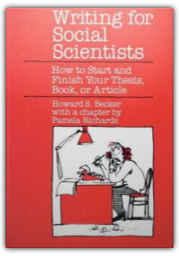
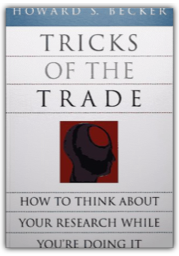
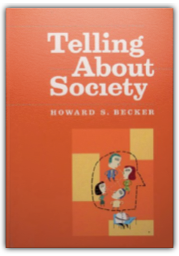
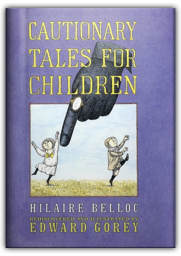
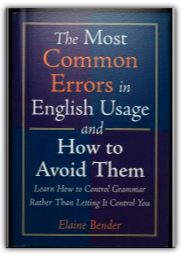
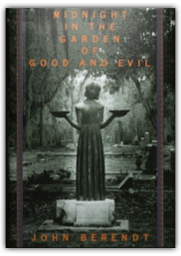
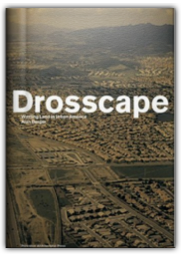
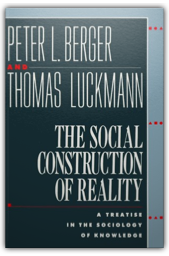


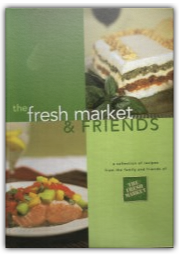




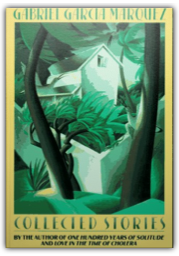
 Made with Delicious Library
Made with Delicious Library